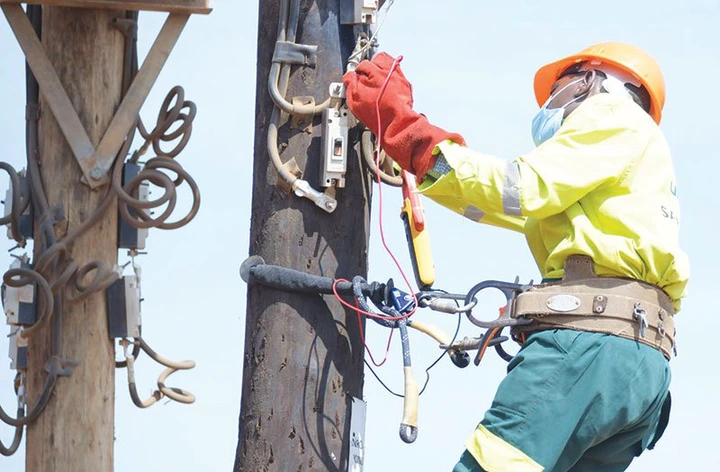Electricity distribution shifts from private to public hands

The government of Uganda is committed to meeting Umeme Limited’s buyout amount before the electricity distributor’s concession runs out at the end of March, Ziria Tibalwa Waako, the chief executive officer of the Electricity Regulatory Authority (ERA), has said.
The payment of the buyout amount will be the last major hurdle in a 20-year concession that will finally see nearly the country’s entire distribution network handed back into the government’s hands.
“Over the past year, we have been actively preparing for the transfer of the distribution network from Umeme Limited to Uganda Electricity Distribution Company Limited,” Waako said, adding, “The ministry of Finance, Planning and Economic Development has committed to provide the buyout amount on time for a seamless transition.”
She was speaking at a recent media engagement that the authority organised at the Golf Course hotel in Kampala. The auditor general was expected to have calculated the buyout amount – money that Umeme Limited would have invested in the network and not yet recovered – by the end of January 2025, according to a preliminary schedule.
Failure to pay the buyout amount to Umeme on time would allow the company to keep running the concession. Also, a delay to pay the buyout amount attracts the penalty of interest. Officials from ERA say government is not ready to witness these two scenarios, and that a cabinet decision was passed that ensures that Umeme is paid its money.
They say there is no way cabinet would have made the decision to have the distribution network transferred from Umeme Limited if there was no commitment to pay the buyout amount.
BUYOUT AMOUNT
The estimate of the buyout amount is about $160 million Shs 600bn, according to different sources, with the possible indication that the figure of what Umeme has and what the auditor general is likely to come up with will be fairly within range.
Now, the next course of action is to determine whether the Uganda Electricity Distribution Company Limited (UEDCL), which will be in charge of distributing electric power across lines below 33kV to domestic and commercial end users in Uganda, can live up to – or even surpass – the standards that Umeme set.
One critical question asked is: if UEDCL is a government company, using largely taxpayer resources for investments, and supervised by a government body, where will they find the motivation to do a good job?
To answer this question, it is best to tap into history, going back 25 years ago when the government of Uganda started implementing the Electricity Act of 1999.
The 1999 Act was introduced to repeal the 1964 Act. The purpose of the 1999 Act was to provide for the establishment of the Electricity Regulatory Authority (ERA), its functions, powers and administration, to provide for the generation, distribution, transmission, sale and use of electricity, to provide for the licensing and control of activities in the electricity sector, to provide for plants, equipment and matters relating to safety, to liberalize and introduce competition in the electricity sector, and provide for a successor company to the Uganda Electricity Board.
Beyond the 1999 Act facilitating the setting up of new institutions, the government of Uganda was looking for solutions to relieve itself of the burden of high debt levels, and forge new ways of attracting new investors into the electricity supply industry.
“Not so many people wanted to invest in our electricity industry [at the time],” Johnson Kwesigabo, the former secretary at ERA from 2001 to 2011, once said, referring to the efforts of getting a major distribution company into the country before 2004.
Between the years 2000 and 2005, many investors were complaining of the high costs of doing business in the country due to the unreliable power supply. By 2002, Uganda had installed capacity of 280MW, although over 30 per cent of that electricity was being lost in the systems. Infact, energy losses in the distribution network were estimated at 34.5 per cent, according to ERA.
UNBUNDLING UEB
Frank Sebbowa, the first chief executive officer of the Electricity Regulatory Authority, remembers the first years after the unbundling of the Uganda Electricity Board (UEB) as hard ones. In an earlier interview, he said the authority found it difficult to tread a thin line of working independently and not offending the government when making decisions for the best of the electricity industry.
Also, there were challenges of opening up the sector to private investors for the first time and being able to police them. At the time, the skilled manpower was still soft, which created challenges in supervising the sector to the highest international standards. For example, setting cost-reflective tariffs became a challenge, and reconciling investments and revenues was not easy.
Nevertheless, Uganda opened up the space to Umeme Limited in 2005, which became the first company to operate the distribution network in the country. This came with an increase in private investments in the distribution segment of the electricity supply industry, and ultimately more customer connections to the national grid.
Now, 20 years later, one can ask: has government achieved the goals it set itself when it opened up the sector? Harold Obiga, the director of Legal Services at ERA, says government has achieved what it set out to do, and that it is now time to move to the second-generation reforms of Uganda’s electricity supply industry.
Obiga points to some numbers to back his point. Electricity generation has gone up to 2,049MW as at the end of 2024 from 395MW at 2003. Access to electricity shot up to 57 per cent at the end of 2023, from five per cent in 2004. The customer base has expanded to 2,107,906 by the end of 2023, from 263,000 in 2004. Other parameters such as power losses, total investments made, and revenue collections have all improved.
This growth is partly attributed to the strong regulation by ERA. And it is a growth that ERA is determined to protect, even now that UEDCL prepares to take over the concession.
Will the achievements that Umeme has made, and the strong regulation that ERA has set for the sector, perhaps be a tall order for the incoming UEDCL? First, it is important to assess the second generation of reforms that the government wants to put up.
Obiga said that under the second generation of reforms, the government is looking “to accelerate universal access to electricity, as well as to improve operational performance in all segments of the electricity value chain.”
One of the things that the market will be looking at is whether there will be a drop in the cost of electricity that consumers will be paying for. There are strong indications that with UEDCL in charge, the tariff will go down. This prediction is premised on the fact that UEDCL will borrow money at a lower interest compared to Umeme Limited partly because it will have a more credible guarantor in government.
Also, UEDCL will have a lower return on investment figure compared to Umeme’s built-in 20 per cent, which is expected to lower the cost of electricity that the public will pay for. Many of the staff at Umeme are expected to be absorbed at UEDCL as long as they meet the qualifications for the job.
This wide pool of experience from Umeme is expected to reinforce UEDCL’s capacity in running the distribution sector well. But will the regulator crack the whip when UEDCL falters? ERA officials say they have credible staff to ensure that there is market efficiency and customer satisfaction.
The regulator is drawing performance parameters that UEDCL will have to meet, and promises that there will be repercussions for failure to meet those targets. The ministry of Finance, Planning and Economic Development has made the capitalisation of UEDCL among its programme priorities for the next financial year so that the body can execute its work.
The market will be watching keenly to see if UEDCL can rise to the occasion when it takes over the distribution network on April 1, 2025.









0 Comments